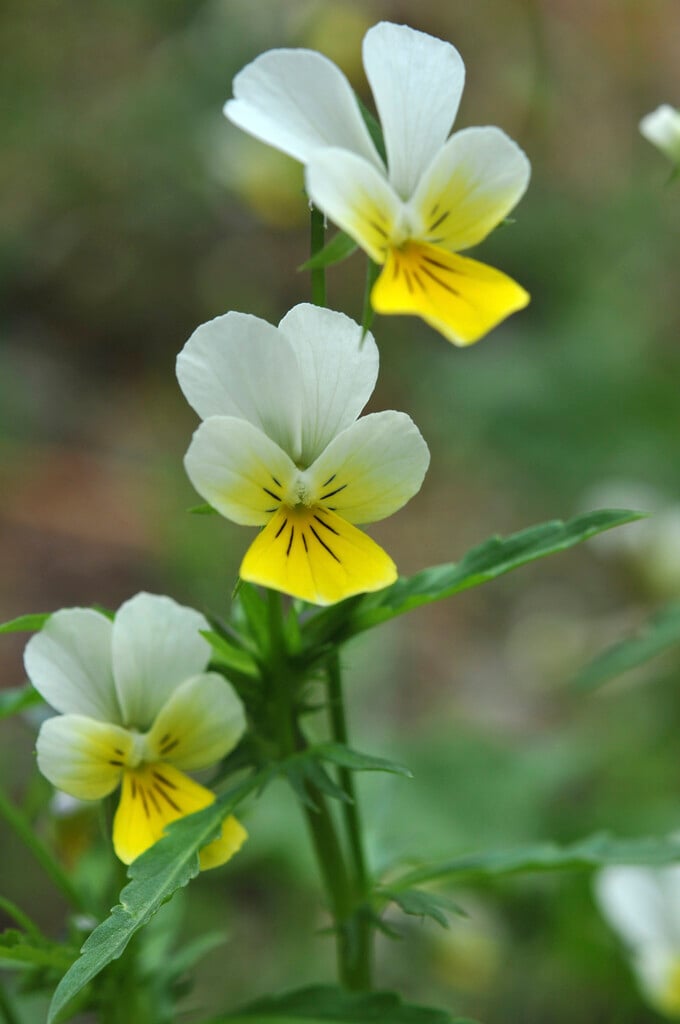Viola arvensis
field pansy
An annual or biennial wildflower, with a basal rosette of spoon-shaped leaves with bluntly toothed edges. Flowers from spring through to late summer, with leafy, upright stems bearing small, creamy white flowers, around 1cm across, with a yellow mark flecked with purple on the lower petal
Size
Ultimate height
0.1–0.5 metresTime to ultimate height
1 yearUltimate spread
0.1–0.5 metresGrowing conditions
Moisture
Well–drainedpH
Acid, Alkaline, NeutralColour & scent
| Stem | Flower | Foliage | Fruit | |
| Spring | Cream White Yellow Purple | Green | ||
|---|---|---|---|---|
| Summer | Cream White Yellow Purple | Green | ||
| Autumn | ||||
| Winter |
Position
- Full sun
- Partial shade
Aspect
South–facing or West–facing
Exposure
Exposed or Sheltered Hardiness
H7Botanical details
- Family
- Violaceae
- Native to GB / Ireland
- Yes
- Foliage
- Deciduous
- Habit
- Tufted
- Genus
Viola can be annuals, biennials or deciduous or evergreen perennials, with simple or pinnately lobed leaves and 5-petalled flowers of characteristic shape
- Name status
Correct
How to grow
Cultivation
Thrives in any well-drained soil in an open, sunny spot; often found in fields and on waste ground
Propagation
Propagate by seed, sown in situ in autumn or spring
Suggested planting locations and garden types
- Cottage and informal garden
- Wildflower meadow
- Wildlife gardens
- Banks and slopes
Pruning
No pruning required
Pests
May be susceptible to slugs, snails, aphids and violet leaf midges
Diseases
Generally disease-free, but may be susceptible to pansy leaf spot, powdery mildews, a rust and virus diseases
Get involved
The Royal Horticultural Society is the UK’s leading gardening charity. We aim to enrich everyone’s life through plants, and make the UK a greener and more beautiful place.
